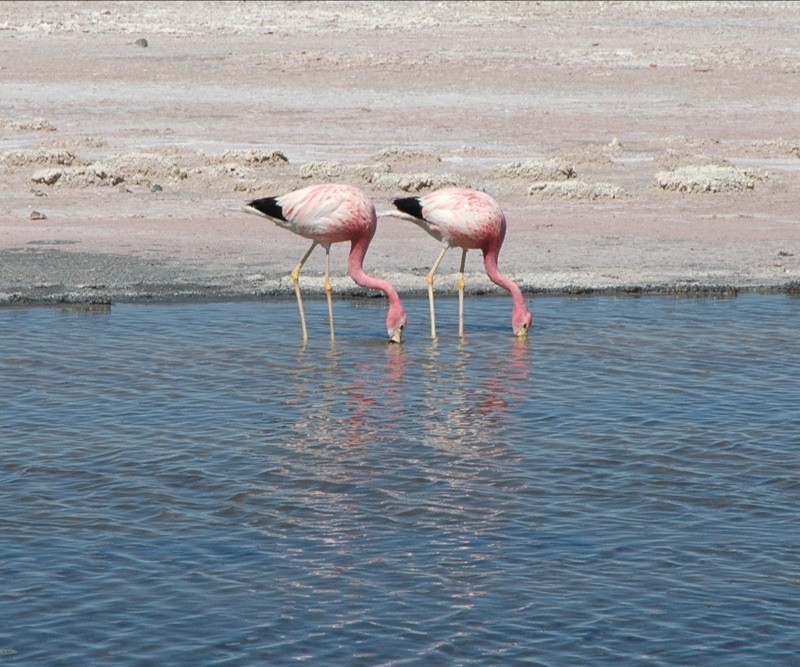Andean Flamingo
A species of Flamingo Scientific name : Phoenicoparrus andinus Genus : Flamingo
Andean Flamingo, A species of Flamingo
Botanical name: Phoenicoparrus andinus
Genus: Flamingo
Content
Description General Info
 Photo By Valerio Pillar , used under CC-BY-SA-2.0 /Cropped and compressed from original
Photo By Valerio Pillar , used under CC-BY-SA-2.0 /Cropped and compressed from original Description
It is distinguished from other flamingos by its deeper lower mandible and the very long filtering filaments ont he maxila. It is the largest flamingo in the Andes. The flamingo has a pale pink body with brighter upperparts, deep vinaceous-pink lower neck, breast, and wing coverts. It is the only flamingo species with yellow legs and three-toed feet. Its bill is pale yellow near the skull, but black for the majority of its length, and curves downward. Its lower mandible is less apparent than those of the genus Phoenicopterus. 
Size
1.1 m
Nest Placement
Ground
Feeding Habits
Andean Flamingo are filter feeders, consuming a diet primarily of microscopic algae and small invertebrates such as diatoms. Equipped with a specialized keeled bill, they extract food via inertial impaction, filtering particles in shallow salty waters. They adapt their foraging strategies when coexisting with other flamingo species.
Habitat
This Andean flamingo is native to the wetlands of the high Andes mountain range from southern Peru to northwestern Argentina and northern Chile. Andean flamingos are migratory, with the ability to travel up to 700 miles in one day. In the summer, they live in salt lakes, and migrate to the lower wetlands for the winter. The cause of this migration from summer to winter is possibly due to the extreme aridity of salt flats during the winter. The path of migration is unknown, but it is thought to occur between the Chilean breeding grounds and the wetlands of central and western Argentina. 
Dite type
Herbivorous
General Info
Feeding Habits
Bird food type
Distribution Area
This Andean flamingo is native to the wetlands of the high Andes mountain range from southern Peru to northwestern Argentina and northern Chile. Andean flamingos are migratory, with the ability to travel up to 700 miles in one day. In the summer, they live in salt lakes, and migrate to the lower wetlands for the winter. The cause of this migration from summer to winter is possibly due to the extreme aridity of salt flats during the winter. The path of migration is unknown, but it is thought to occur between the Chilean breeding grounds and the wetlands of central and western Argentina. Breeding is concentrated in northern Chile, extreme southwestern Bolivia, and northwestern Argentina. During the nonbreeding season, some birds remain around the same wetlands where they bred, but others move to lower elevation wetlands and lakes, including east to the central plains of Argentina, and also north through the Andes to southern Peru. Vagrant as far north as Conococha in central Peru, to the coast of Peru and northern Chile, to Amazonian Brazil, to southern Argentina, and to coastal southern Brazil. 
Species Status
The Andean flamingo is considered a vulnerable species due to the mining business and human disturbances causing changes in its habitat. 